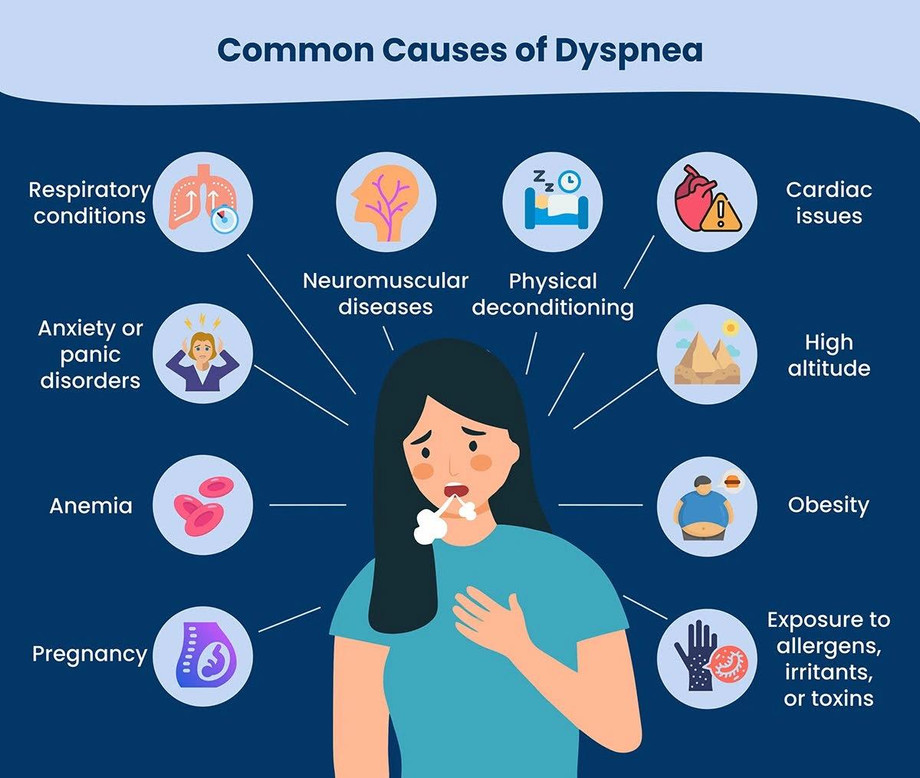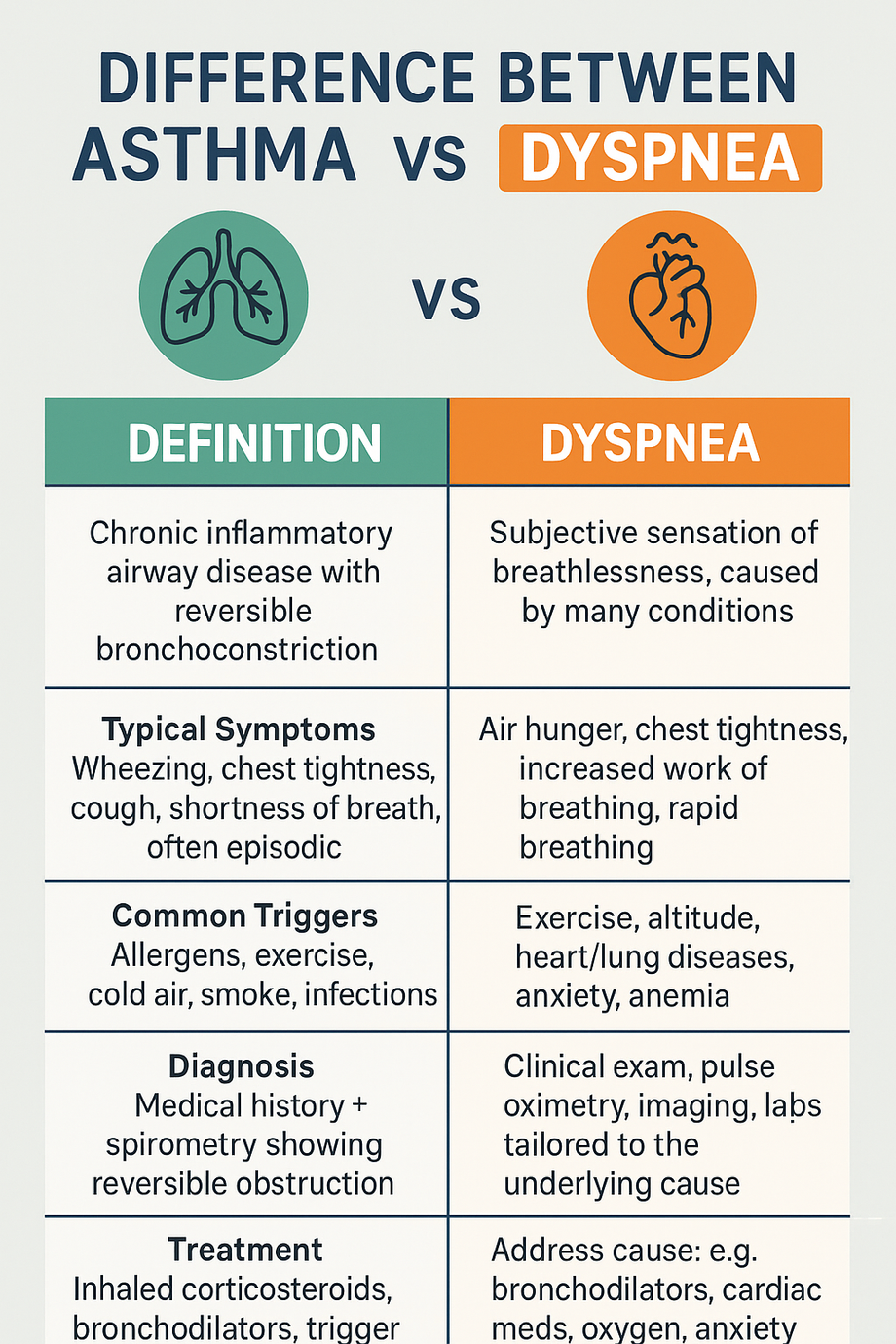Intro: A Startling Reality
Shortness of breath—or dyspnea—affects over one-quarter of adults worldwide and around 16% even among low‑risk individuals . In the U.S. alone, it impacts roughly 7–8% of the population, with more than 4,000 related deaths each year. Though often associated with known lung diseases like asthma or COPD, dyspnea can sneak in subtly and signal something more serious.
Dyspnea is the medical term for shortness of breath or difficulty breathing. It can result from heart, lung, or anxiety-related conditions.
Causes of Dyspnea
Sign's of Dyspnea
1. Breathing Audibly When Exhaling
If you regularly notice yourself wheezing or hissing while exhaling, don’t dismiss it as “normal aging.” Unusual exhalation sounds can signal bronchospasm or airflow limitation—often overlooked until more severe breathlessness hits.
2. Breathlessness Lying on Your Side
You may feel perfectly fine sitting or standing, but suddenly winded when lying on your left or right side? This positional dyspnea could mean fluid accumulation (as in early heart failure), poor lung mechanics, or nerve compression.
3. Sudden Need to Catch Your Breath During Everyday Chores
Feeling short of breath when making the bed, cooking, or going upstairs? It’s not just a bad day—it might be a red flag. Over a 1.3-year population study, overweight, stress, undiagnosed respiratory disease, and depression accounted for a whopping 63 % of new breathlessness cases among middle-aged adults.
4. Neck or Throat Tightness Along with Shallow Breathing
Tightness not just in your chest but around your throat, accompanied by shallow breathing, can come from anxiety-induced hyperventilation or upper‑airway issues—not asthma. This is often ignored but very treatable with breathing exercises, mindfulness, or ENT evaluation.
5. Waking Up Short of Breath or Gasping
Nocturnal dyspnea—waking up gasping—could point not just to undiagnosed sleep apnea or acid reflux, but even heart‑failure or pulmonary edema starting early. It’s dangerously easy to shrug this off, but it's a sign you shouldn’t sleep on.
6. Persistent Cough with No Congestion
A dry, unrelenting cough that leaves you breathless—but with zero sniffles or congestion—might be interstitial lung disease, pulmonary fibrosis, or long‑COVID sequelae. A recent long‑COVID study confirmed persistent dyspnea and mood-related impact months after infection.
7. Feelings of Being “Air‑Hungry” or Chest “Heaviness”
Described as “air‑hunger” or a weight on the chest—not just breathlessness—this sensation involves complex brain-lung communication. Researchers say it's multifaceted, involving sensory-perceptual and emotional pathways.
Learn more: Dyspnea-shortness of breath
How Dyspnea is Different from Asthma
What to Do When Dyspnea Hits
Use with wedge or lumbar supports to help open up lung capacity and ease breathing,Choose pillows that offer neck support and a 2–4 inch incline, with breathable, cooling materials like gel-infused memory foam. Seek medical help if dyspnea appears suddenly or worsens, especially with chest pain, dizziness, or bluish lips.
Other warning signs include high fever, leg swelling, throbbing pain, or a productive cough.
FAQ's
Q1: Can anxiety cause real shortness of breath?
A: Yes—anxiety can trigger air hunger and chest tightness, mimicking asthma, but testing (spirometry) will reveal normal lung function.
Q2: What tests should I ask for if everyday chores leave me breathless?
A: Start with spirometry, pulse oximetry, BNP (for heart), chest X-ray or CT, sleep study (for apnea), and possibly 6-minute walk test.
Final Thoughts
Dyspnea isn’t just “hard breathing”—it can be your body’s alarm for issues ranging from airflow limitation to heart, neurological, or psychological conditions. Paying attention to subtle cues, like positional breathlessness or neck tightness, could help you catch something big—before it becomes serious.


